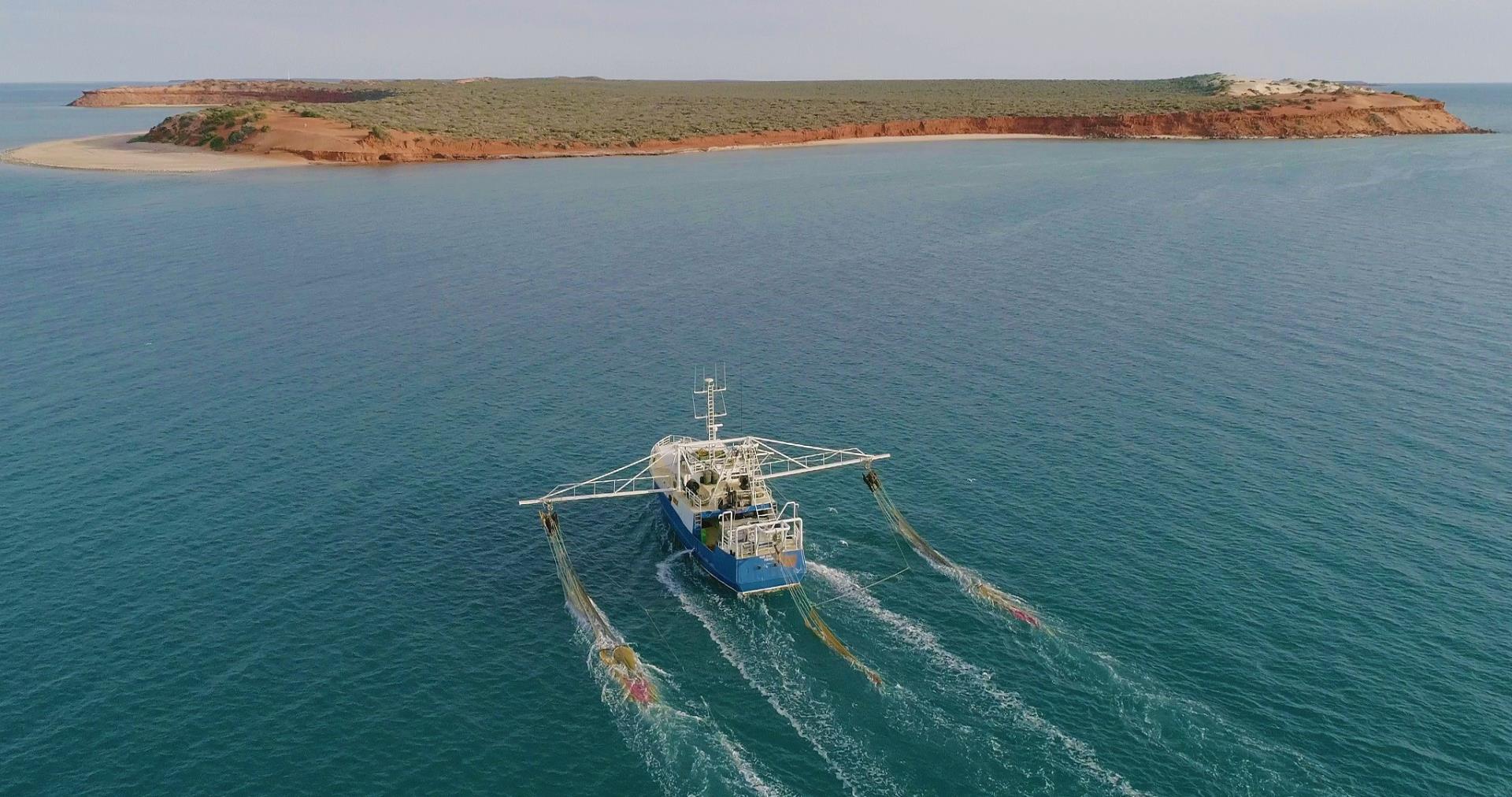Fishing and Aquaculture
Overview
The pristine and pollution free waters of the Gascoyne Coast Bioregion provide the perfect marine environment that presents a transition between the fully tropical waters of the North West Shelf of the North Coast Bioregion and the temperate waters of the West Coast Bioregion. Offshore ocean temperatures range from about 22-28°C, while the inner areas of Shark Bay regularly fall to 15°C in winter.
The major fish stocks are generally tropical in nature, with the exceptions of the temperate species, pink snapper, whiting and tailor, which are at the northern end of their range in Shark Bay.
Because of the many natural marine incubators such as coral reef, sand flats and seagrass beds, the Gascoyne Coast Bioregion features superior breeding grounds, fish nurseries and feeding habitats. These conditions contribute to both successful commercial fisheries and a popular recreational fishery.
The Gascoyne Coast Bioregion has been identified as one of 18 world ‘hotspots’ in terms of tropical reef endemism and the second most diverse marine environment in the world in terms of tropical reef species.

Prawn trawler in Shark Bay, image courtesy of WAFIC
The Shark Bay Prawn and Scallop Managed Fisheries and the Exmouth Gulf Prawn Managed Fishery are three of the State’s most valuable commercial fisheries with combined catches valued in the range of $40-50 million annually. These trawl-based fisheries have operated sustainably in the region since the mid-1960s and are internationally recognised as ‘best practice’ in terms of both management and research.
Only a small number of the approximate 1400 species of fish inhabiting this bioregion are targeted by commercial fishing activity.
Prawns
The Shark Bay Prawn and Exmouth Gulf Prawn Managed Fisheries have been nationally accredited as Ecologically Sustainable Developments. Management of the prawns is based on input controls which include limited entry, seasonal and area openings and closures, gear controls and limits on crew numbers. By-catch reduction devices are fitted to all trawl nets with prawn trawl nets also fitted with secondary by-catch reduction devices.
The Shark Bay Prawn Managed Fishery targets western king prawns and brown tiger prawns, and the take includes coral prawns and endeavour prawns.
The Exmouth Gulf Prawn Managed Fishery targets brown tiger prawns, western king prawns, endeavour prawns and banana prawns.
Scallops
The Shark Bay Scallop Managed Fishery catches the saucer scallop and is usually WA’s most productive scallop fishery. Management of the prawn and scallop fisheries is based on input controls, which include limited entry, seasonal and area openings and closures, gear controls and limits on crew numbers. Both fleets undertake trawl fishing using otter trawl systems and each fleet has a separate standard net size and gear configuration.
This system has specific effort controls based on maximum head-rope length and the maximum fishing days (season duration). These controls have allowed fleet rationalisation to occur in response to improvements in vessel and gear efficiency.
Blue Swimmer Crab
The Shark Bay Blue Swimmer Crab Managed Fishery, based primarily in Carnarvon but operating throughout the waters of Shark Bay, has grown in the last decade to be Australia’s largest blue swimmer crab fishery. The blue swimmer crab resource in Shark Bay is harvested commercially by the Shark Bay crab trap, Shark Bay prawn trawl and Shark Bay scallop trawl fisheries.
This crab stock also supports a small but important recreational fishery.
The Gascoyne also supports the majority of the catch of deep-sea crabs off the coast of Western Australia as part of the West Coast Deep Sea Crustacean Managed Fishery.
Demersal Scalefish
The Gascoyne Demersal Scalefish Managed Fishery encompasses commercial and recreational (line) fishing for demersal scalefish in the continental shelf waters of the Gascoyne Coast Bioregion.
Commercial vessels in these waters historically focused on the oceanic stock of pink snapper during the winter months. Licensed vessels fish throughout the year with mechanised handlines and, in addition to pink snapper, catch a range of other demersal species including goldband snapper, rosy snapper, ruby snapper, red emperor, spangled emperor, red throat emperor, cods including rankin cod and goldspotted rockcod, pearl perch, mulloway, amberjack and trevallies.
A limited number of licensed charter vessels and a large number of recreational vessels fish out of Denham, Carnarvon and around the Ningaloo area.
Aquaculture
The region currently hosts a small pearling industry in Shark Bay.
Another land-based aquaculture facility near Exmouth is undertaking commercial production of domesticated, disease-free tiger prawns for aquaculture at the bio secure site. Conditional translocation authorisation has been granted, subject to inspection of the facility by DPIRD before the movement of any prawns.
Aquaculture represents a significant opportunity for the region. Global seafood demand continues to grow, and aquaculture is expected to overtake wild capture as the primary source of production.
A significant feature of the Gascoyne is the large amount of semi protected coastline providing opportunities for sea cage aquaculture of temperate to tropical marine finfish.
DPIRD is also focusing on the management and regulation of an emerging local aquaculture sector, which is producing aquarium species that include coral and live rock. This developing sector is regulated according to the policy; The Aquaculture of Coral, Live Rocks and Associated Products.